“And don’t hit your head.” It was the mantra for our second day inside (and on top of) the limestone massif of Tsingy de Bemaraha National Park. The day previous, we had a five-hour grind on Monambolobe in “Small Tsingy” and would complete the Circuit Ranotsara and Amozavaky in “Grand Tsingy.” Don’t be fooled by the Small description—it was no small feat the moment we left the boat-in access trailhead and scrambled vertical in the sauna-soup heat.
Sickle-billed vangas and chatty vasa parrots welcomed us into the shadows of the forest but any lick of wind would have to come from a fart. We could have refilled our water bottles with the sweat rung from our t-shirts as we ascended and made our way to the ultimate lookout (and look down!) that miniaturized the pirogue boats we’d been in just minutes ago. Air plants tumbled from branches, bleached snail shells as big as croissants littered the forest floor. Sensitive plants cowered to our insensitive touch. We walked in the fragrance of plumerias and knocked on the trunks of ebony trees up to this knock-out view.
Strangler figs twirled around anything living like camouflage boa constrictors. Spaghetti vines suspended from mile-high branches, encapsulating several trees and transforming them into all-natural Medusas. At ground level, Ant Mother nests peppered the trail. In this symbiotic relationship, ants welcome cat-eyed snakes into their colonies. The cat-eyed snake will eat the pesky blindsnakes that prefer a menu of termites and ant broods.
Mindful of marching ants, snake holes and termite towers, we had to have all our wits about us with every footfall while trying to take in the geological fissures, dangling orchids and dazzly Malagasy sunbirds that teased us with their song. It was a good trial run for Grand Tsingy when we would be wearing harnesses, climbing ladders and definitely taking things to the next level.
We had pressed Irma for details about the via ferrata. (If you’re just tuning in: via ferrata routes require climbers to wear harnesses and clip into cables using carabiners). We knew the rock in the park was like Ginsu knives and we’d met a Spanish group at our ecolodge who had been smartly and safely outfitted in cycling gloves from their tour company. I asked Irma, “does the park office have any gloves we could borrow for the Tsingy hike?”
“No, but if you have them, you can bring.”
We didn’t have gloves (obviously) or ham sandwiches either. Kim and I asked our smiley server if we could have ham on our cheese sandwiches for the picnic lunch provided by the hotel but we were told “no.” The other lunch option was couscous with tinned peaches and a custard tart which didn’t really feel après- hike to us.
“Why?” I had to ask. I knew the kitchen had ham—it was part of our daily breakfast plate that consisted of two slices of fanned out ham, two slices of salty cheese, a brioche bun with a pot of local jam. What was the big deal? We’d skip our breakfast ham in favour of having it on a bun for lunch if we could.
“No ham in the park. It’s not good. It’s a fady.”
Oh, the fady thing. I’d read about these cultural taboos in my mad pre-trip research but didn’t think they’d actually come into play. The Malagasy taboos (fady) vary between tribes and villages and include all sorts of seemingly innocent behavior like whistling, pointing (you must use an open palm with all fingers together or a clenched fist), bathing in particular rivers or lakes, eating pork in the park or squatting anywhere in Small Tsingy (to relieve yourself) as there are sacred graves in the caves along the river.
Holy Shit
I was okay with a ham-less sandwich. Unfortunately, I wasn’t okay with how sour my stomach was as we made our way through Small Tsingy. Kim’s stomach was knotted with thoughts of the via ferrata but I was fully consumed by the pressure of possibly disrespecting the fady and the sacred graves. We had seen the skulls along the rock ledge as a reminder but I knew I was going to shit my pants. Shorts, actually. I stopped to zoom in on a paradise flycatcher and felt a surge of heat and heartbeat.
Kim and I both had cramping guts since we’d disembarked from the riverboat. There was no element of surprise here—I watched our “cooker” (as she was introduced) emerge from this ‘toilet’ below barefoot. I still have no idea why it was so wet in front of the suggested toilet seat and why a broom was provided. There was no soap or running water (other than the river the colour of wet clay). That night the secret ingredient in our riverboat chicken dinner was probably E. coli. I’d already been doubled over for hours and slept like a curled up shrimp in our tiny tent.
I felt internally hot and took one stride that was perhaps too far. Yeah, it was that sickening feeling of, well, that’s over with. I looked behind me and at my poor choice of white and lime-striped surf shorts. Hopefully it looked like I had sat in something? Yeah, that was it. As Kim and I hiked back to the boat I felt remarkably better but we still had to pull over for our ham-less picnic lunch with our guide and boat dude. I told Kim what had unfolded behind her and my accidental taboo breaker.
“Do you want me to rinse out your shorts while we have lunch? They’ll dry out quick.”
Kim is forever kind and willing to do such things without second thought. I wondered how we would explain the situation if Irma saw me having a bottomless lunch. “Oh, I’m just really hot. Couldn’t stand having my shorts on a minute longer.” I wasn’t wearing underwear either.
The river is known to be a hotbed for Schistosomiasis (snail fever or bilharzia, a disease caused by parasitic flatworms called schistosomes) so I was truly between a rock and a hard place.
Fast forward 12 hours. The via ferrata and Grand Tsingy was all adrenalin and fear factor-induced sweating. It was Kim’s turn to have a queasy gut and we ate our Clif bars with great caution.
Our guide failed to mention that we’d be crawling around cave bellies and stretching through foxhole tunnels for a good chunk of it. We been in two caves in Small Tsingy but in Grand Tsingy, the cave entrances were suitable for mallard ducks. “Don’t be fat and don’t be tall” is great advice if you’re not. I’m clearly not fat but I am 5’8 and a half (and in Hoka runners, I’m at least 5’10!).
“And don’t hit your head!”
Our guide, Irma, was a man of few words but they were vital ones. These caves had upside-down shark fins of rock that begged to slice open a skull. Kim and I were punctured and scraped after a few minutes in. In the sandstone cave (above), which was all chalk and slippery powder, I did one spectacular header when the lip of my shoe hung me up. Leaning on my massage therapist curricula, I did a self-check for anatomical snuff box tenderness to determine whether I had a fractured scaphoid (whew, no). We were getting properly beat-up my nature. Kim wondered how many times she could bang her left elbow in the same spot(six times).
We were scaling 90° vertical ladders and clipping into cables to traverse deep chasms (and death!). According to Irma, it was supposed to be a shortcut but after 40 minutes, I was less than thrilled by the passages that squeezed us skinnier and skinnier though Small Tsingy had already tested our claustrophobia scale.
When Kim and I emerged from the cave’s throat, we looked as though we’d had a no-rules fight with chalkboard brushes. We were exhausted from being so cautious and not fat and not tall. Every foot placement was intentional—-and even when we reached the Boardwalk, a 1km track that links the two cave systems, the dry, fallen leaves were like walking on the back of slippery eels. “Watch for holes,” was another reminder as we squished through crevasses ankle-deep in leaves with hidden roots that crossed the path like tripwires.
We moved from the chalky guts of the cave to the iconic suspension bridge that wobbles 60m above the ground. It was an obstacle course of floating stone toeholds, chasms, clefts, millipedes with red hot feet and industrial-sized spiders with webs and silk as tough as dental floss. The vines were doubling as snare traps, cinching around our
The rock underfoot shifted from slippery and polished to jagged shoe-eating terrain. Thorny and razor-sharp spiky plants taller than me grabbed at our bare skin.
Why did we subject ourselves to all of this you ask? Well, there were lemurs, by the dozen. There were red-fronted brown lemurs, making hog-like grunts in the canopies. The birds were stunners but the sifakas were the biggest magnet and they delivered with their antics. This sifaka hung like pants from a clothesline.
Also hanging as though clipped on by a clothespin was this evil wasp nest. If you’ve been tagging along with Kim and I in Madagascar since my first post you may recall that I was ambushed by an endemic tiphiid wasp and stung 14 times in one go in Grand Tsingy. And if you’re keeping track of my maladies (hi mom and dad), it was in Small Tsingy that I shit my shorts.
This is what a wasp nest looks like in Madagascar—-they dangle from branches like steaks.
Back at our ecolodge, Kim and I nursed our wounds and weariness with stiff caipirinhas poolside. From blindsnakes to wasp hive steaks, the trails through Tsingy made for a non-stop full-on sensory walk.
Don’t be fat. Don’t be tall. It worked, for the most part!
Do you have a hairy caving experience to share? Have you been on a via ferrata route? Have you been stung by a team of wasps? Shit your pants abroad? I’d love to compare notes, of course!

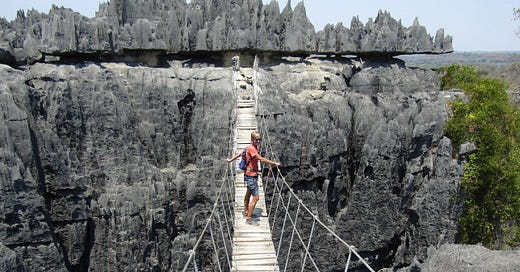


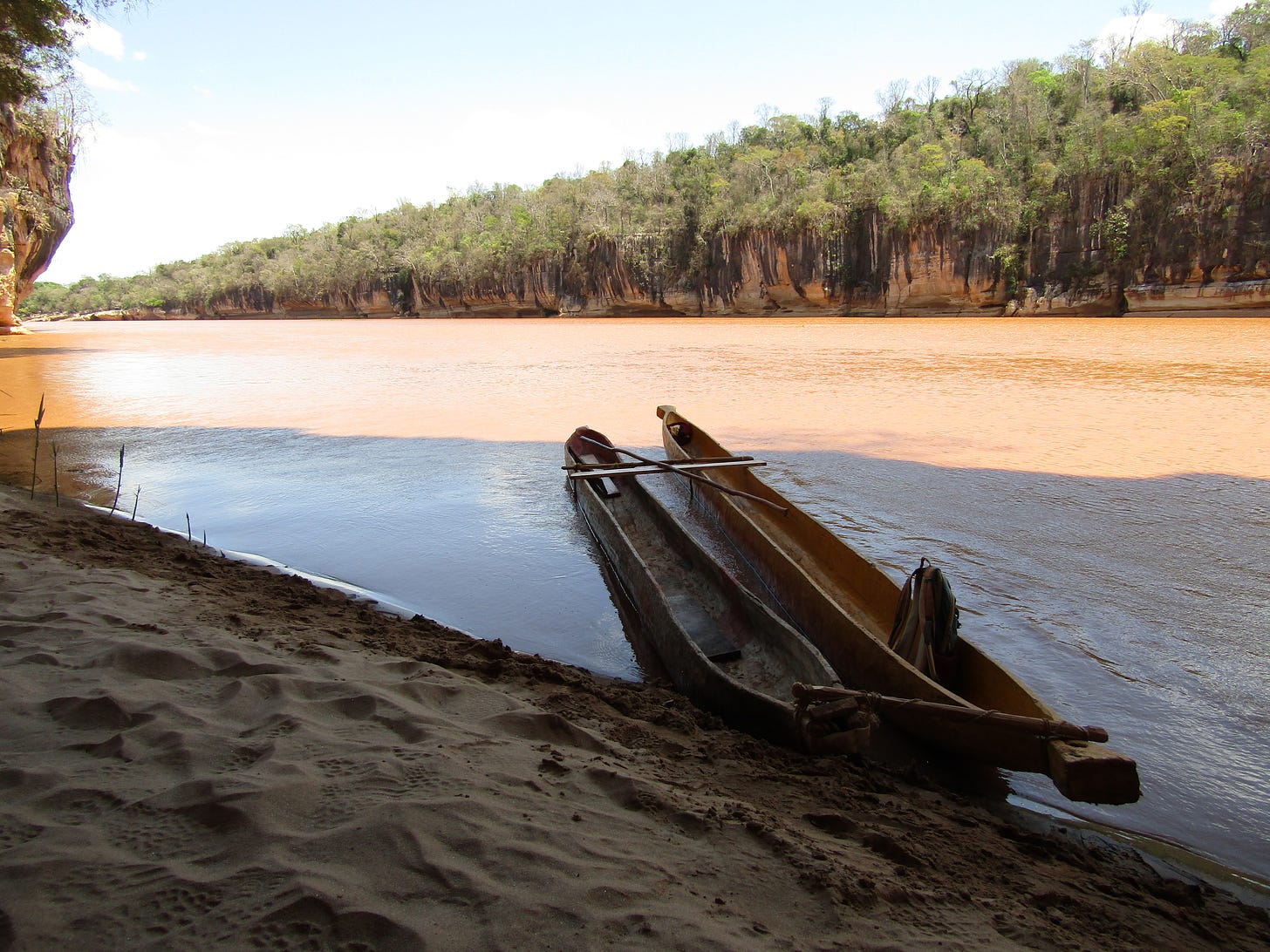
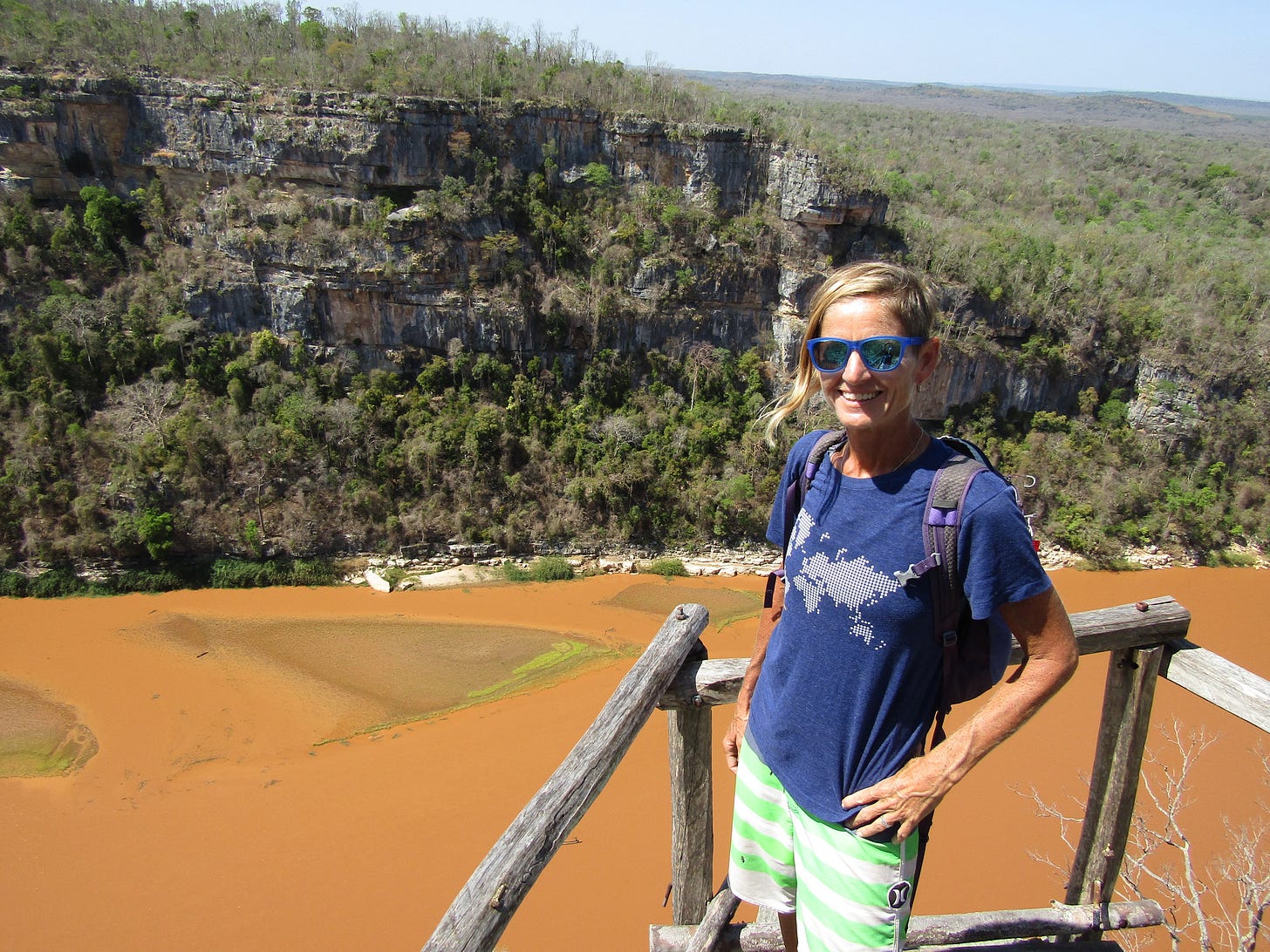
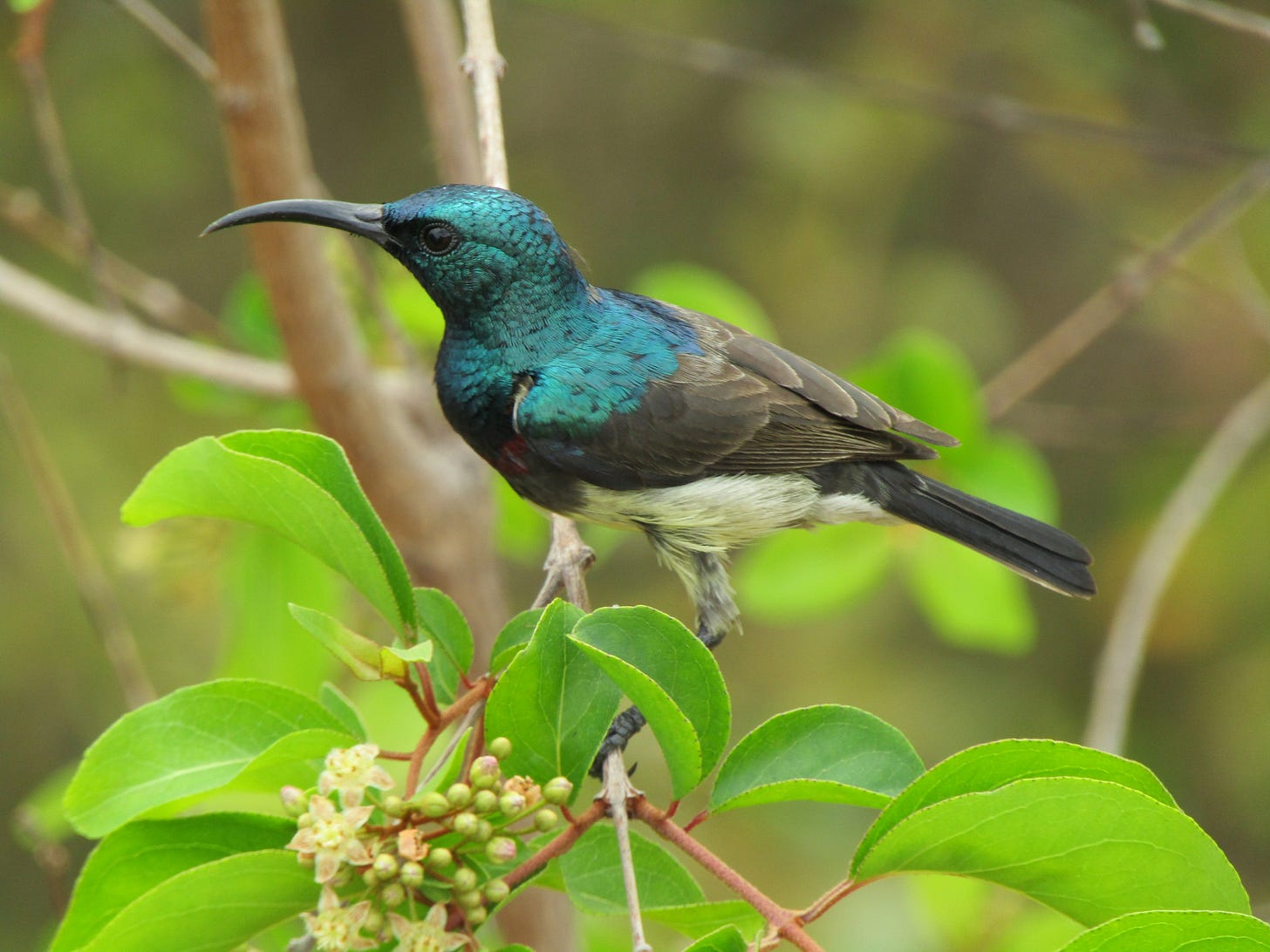


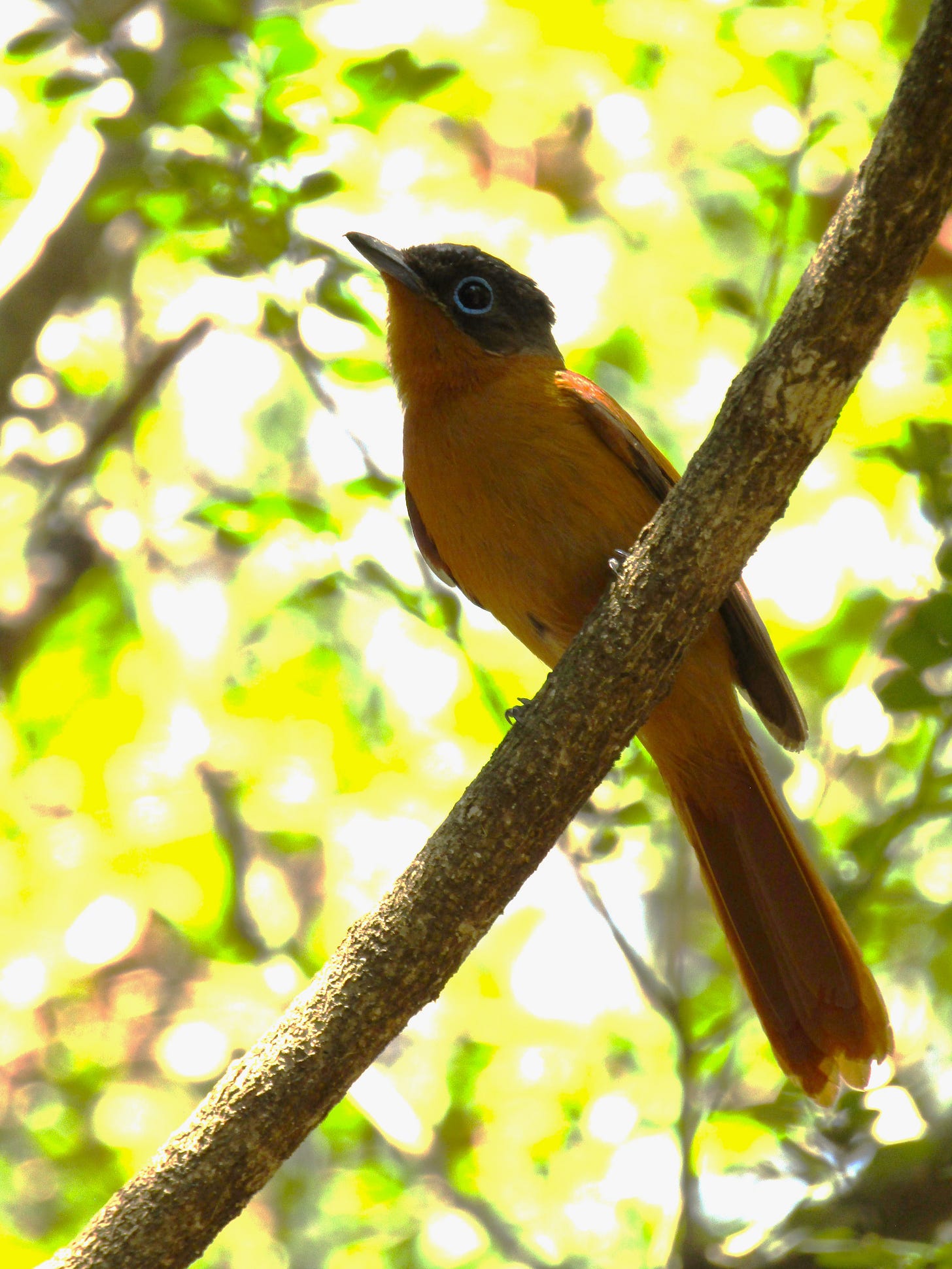
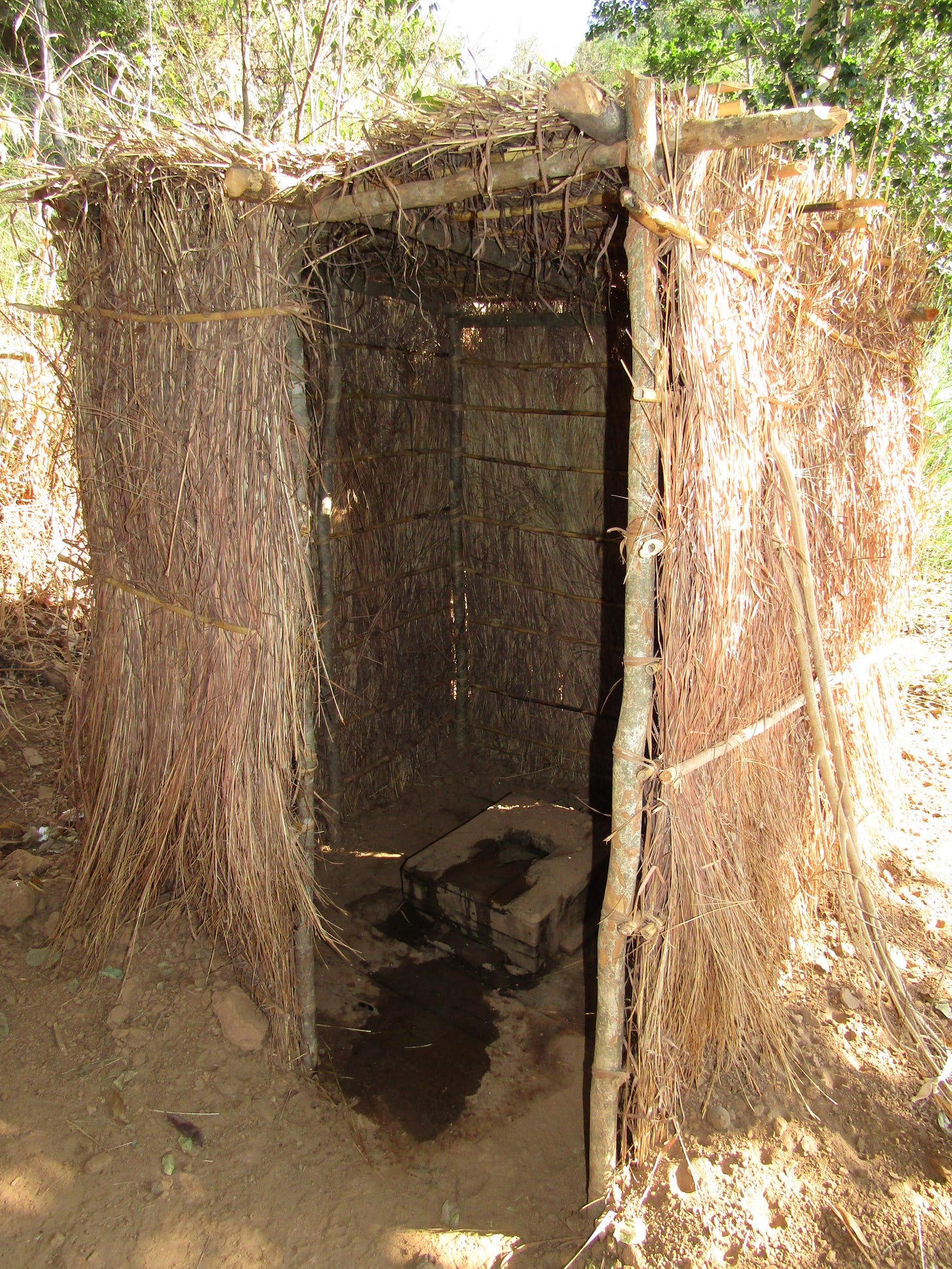
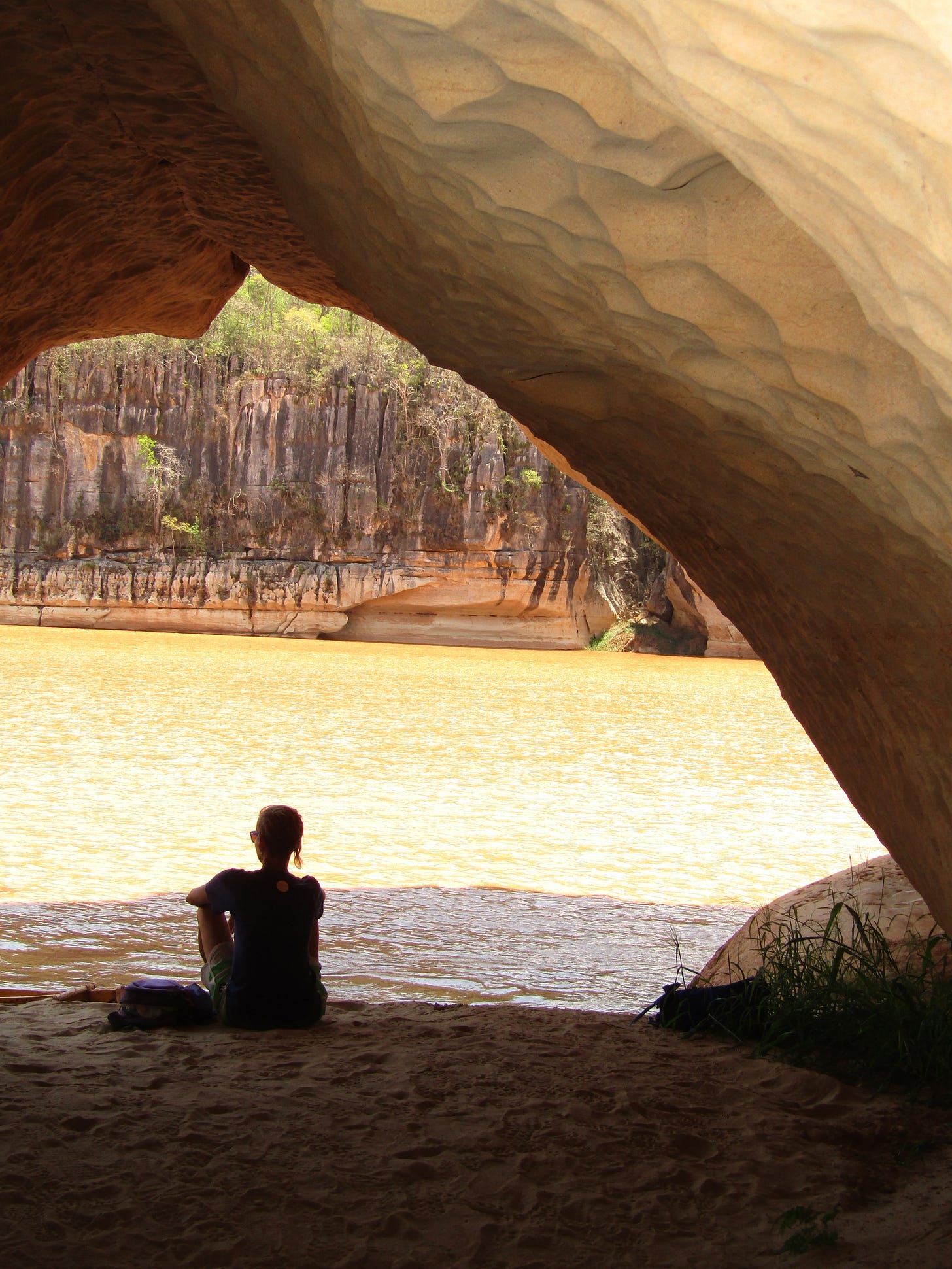
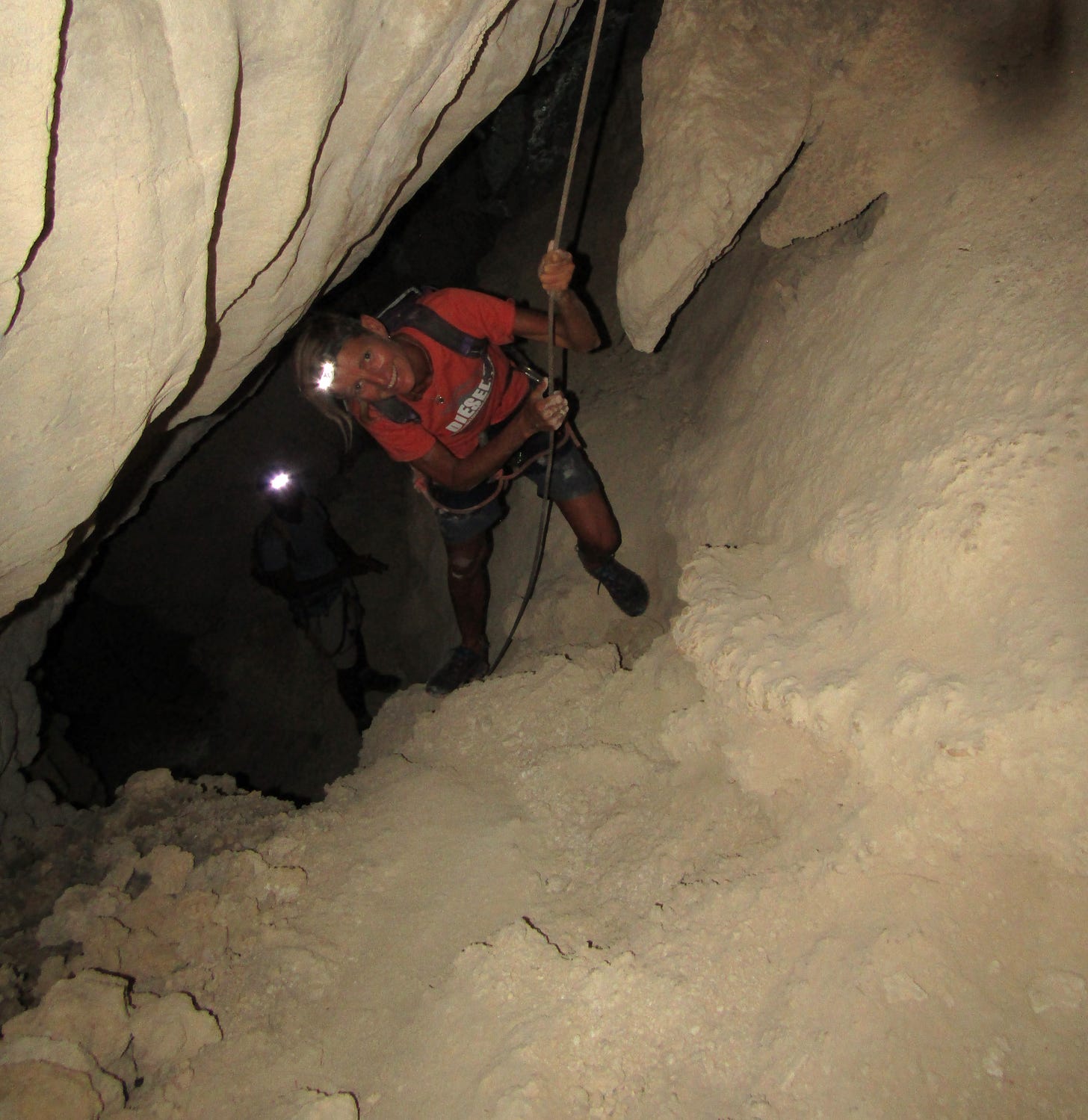
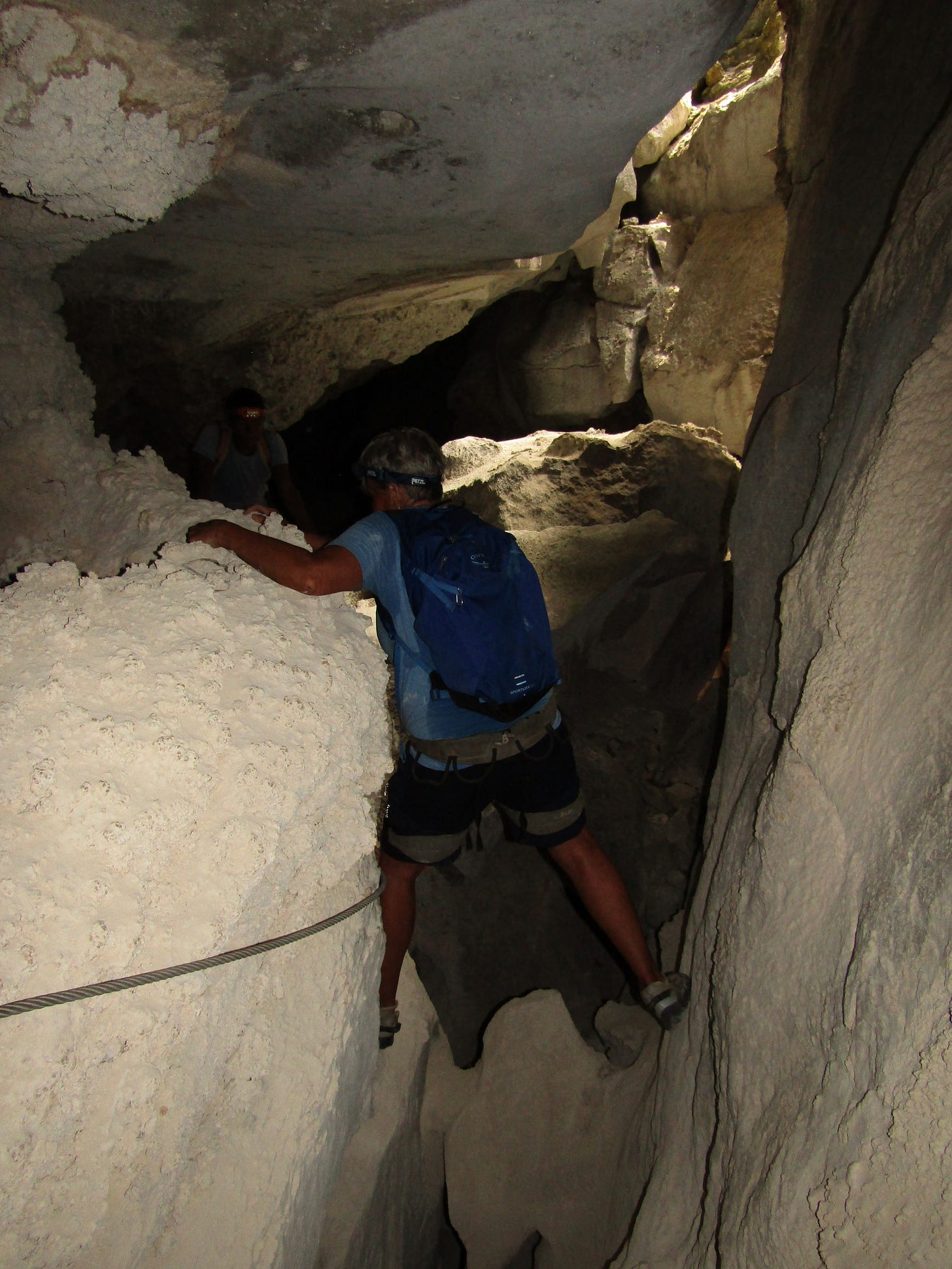
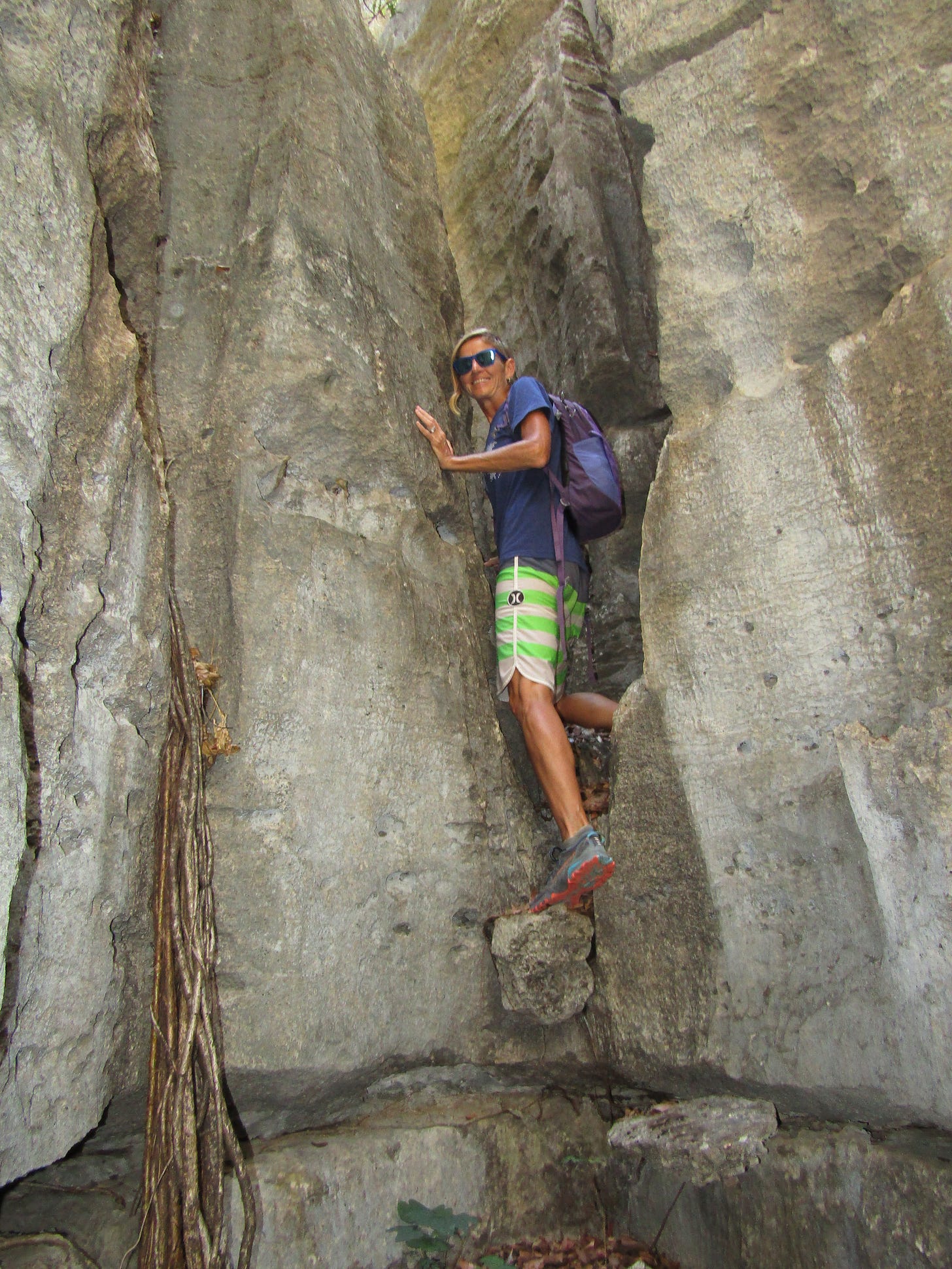
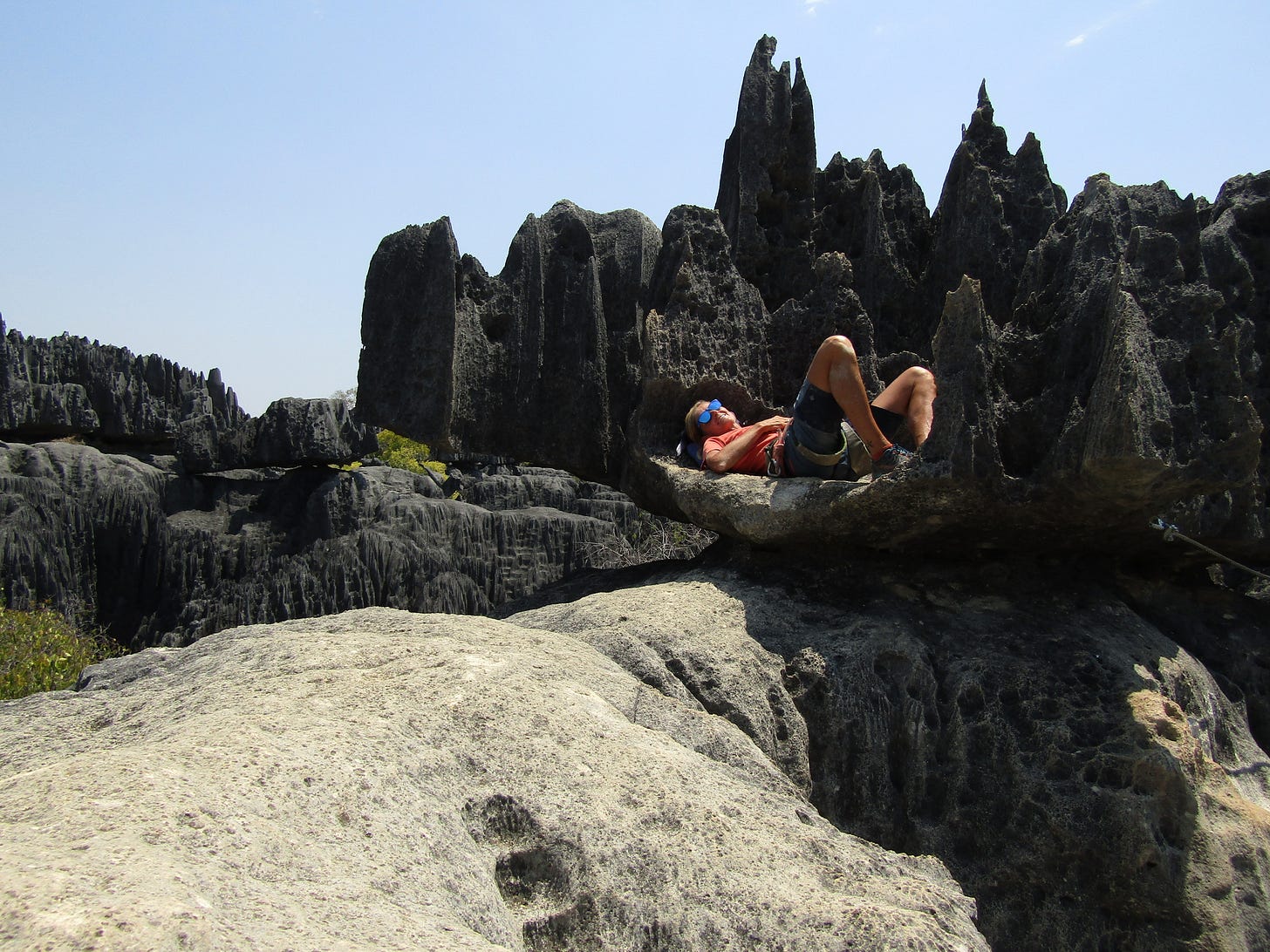
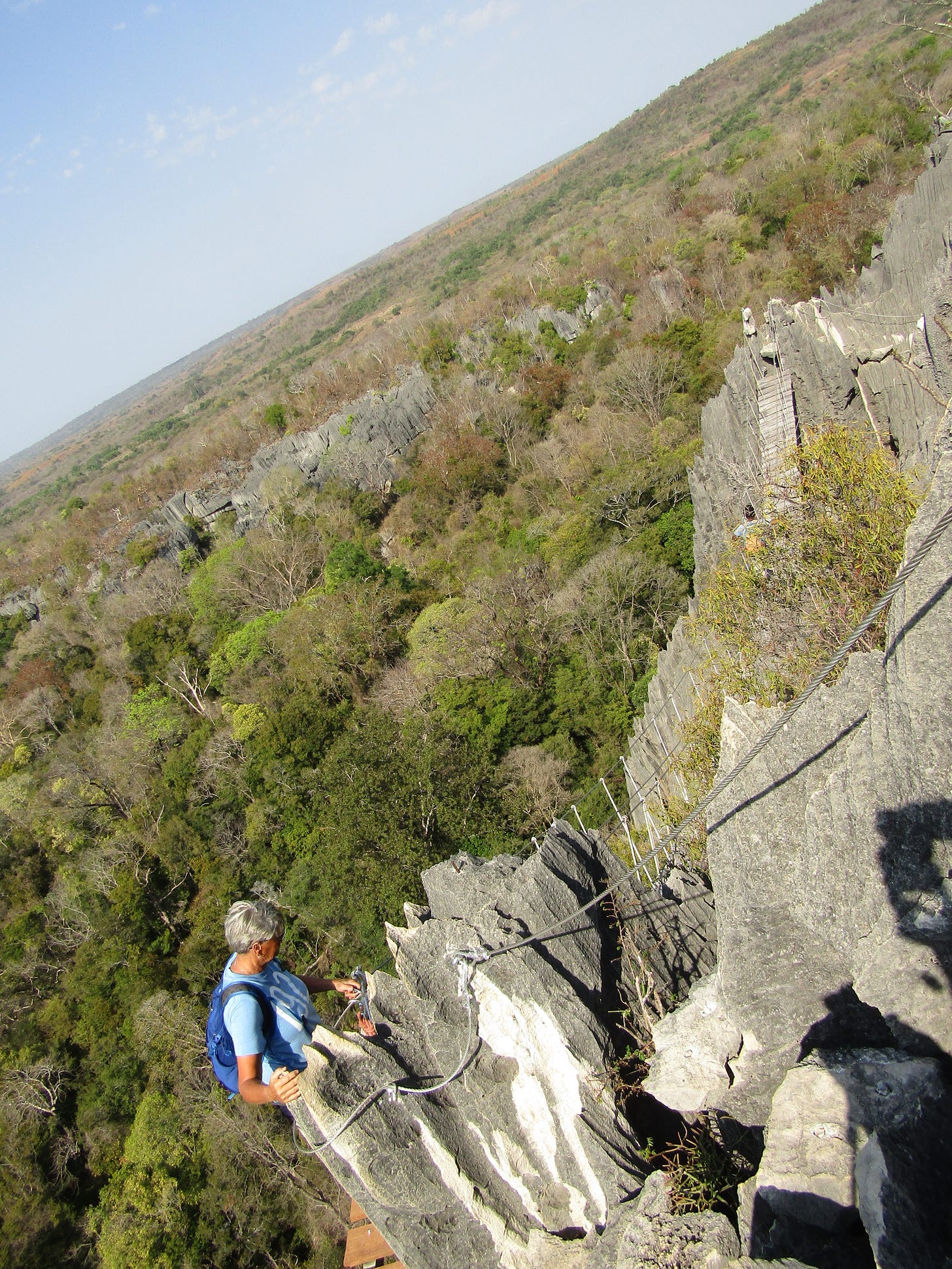
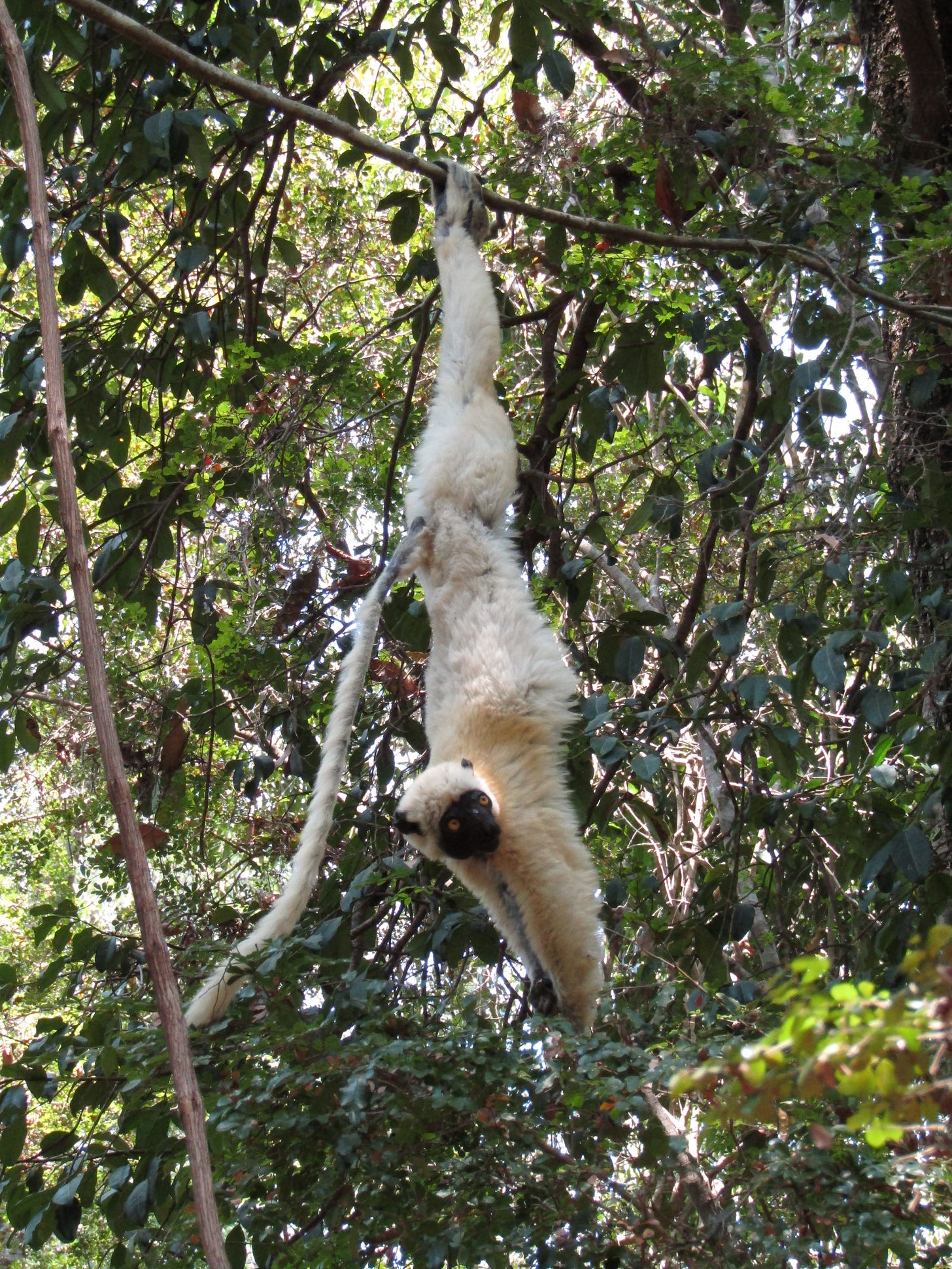
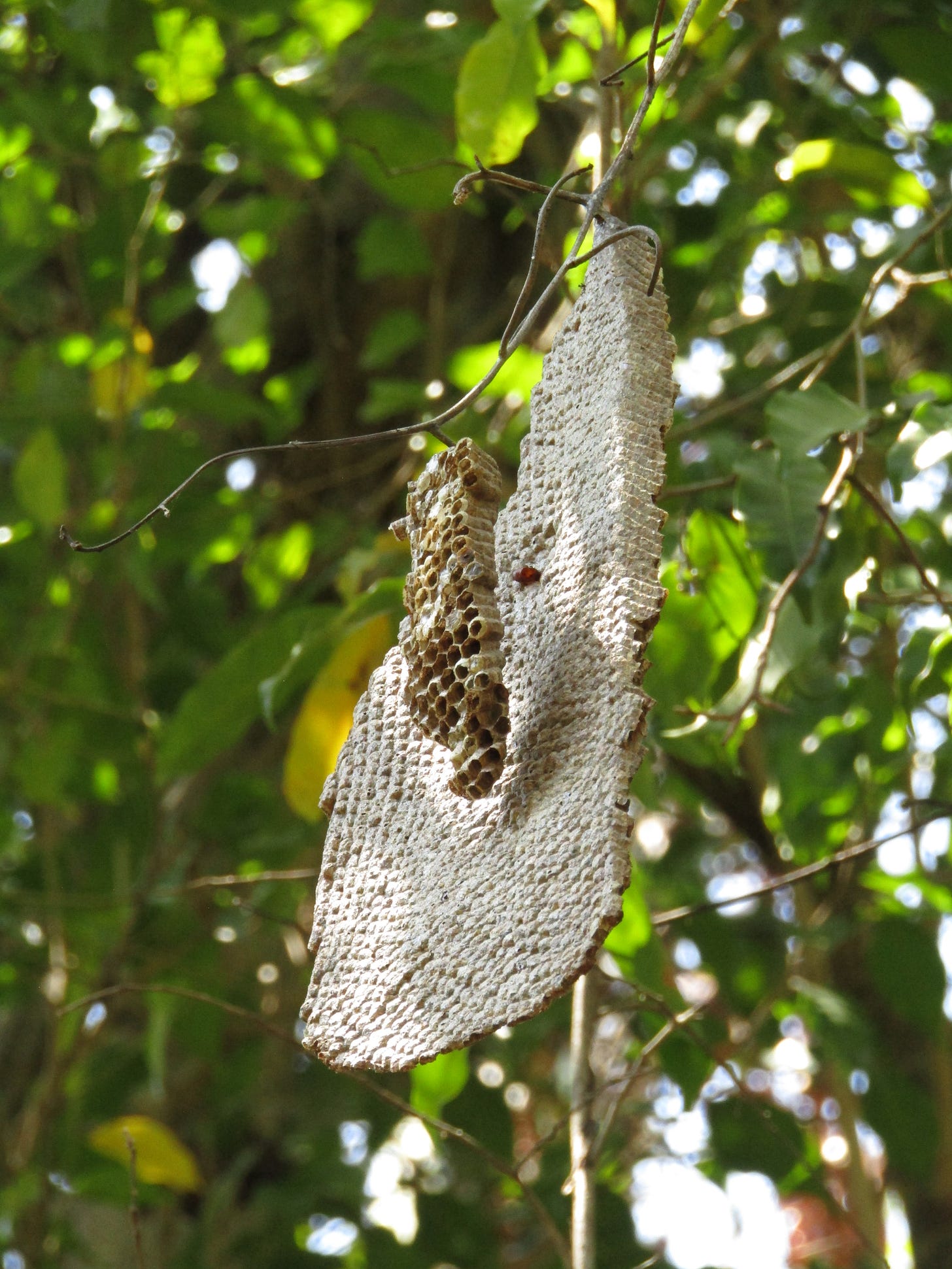
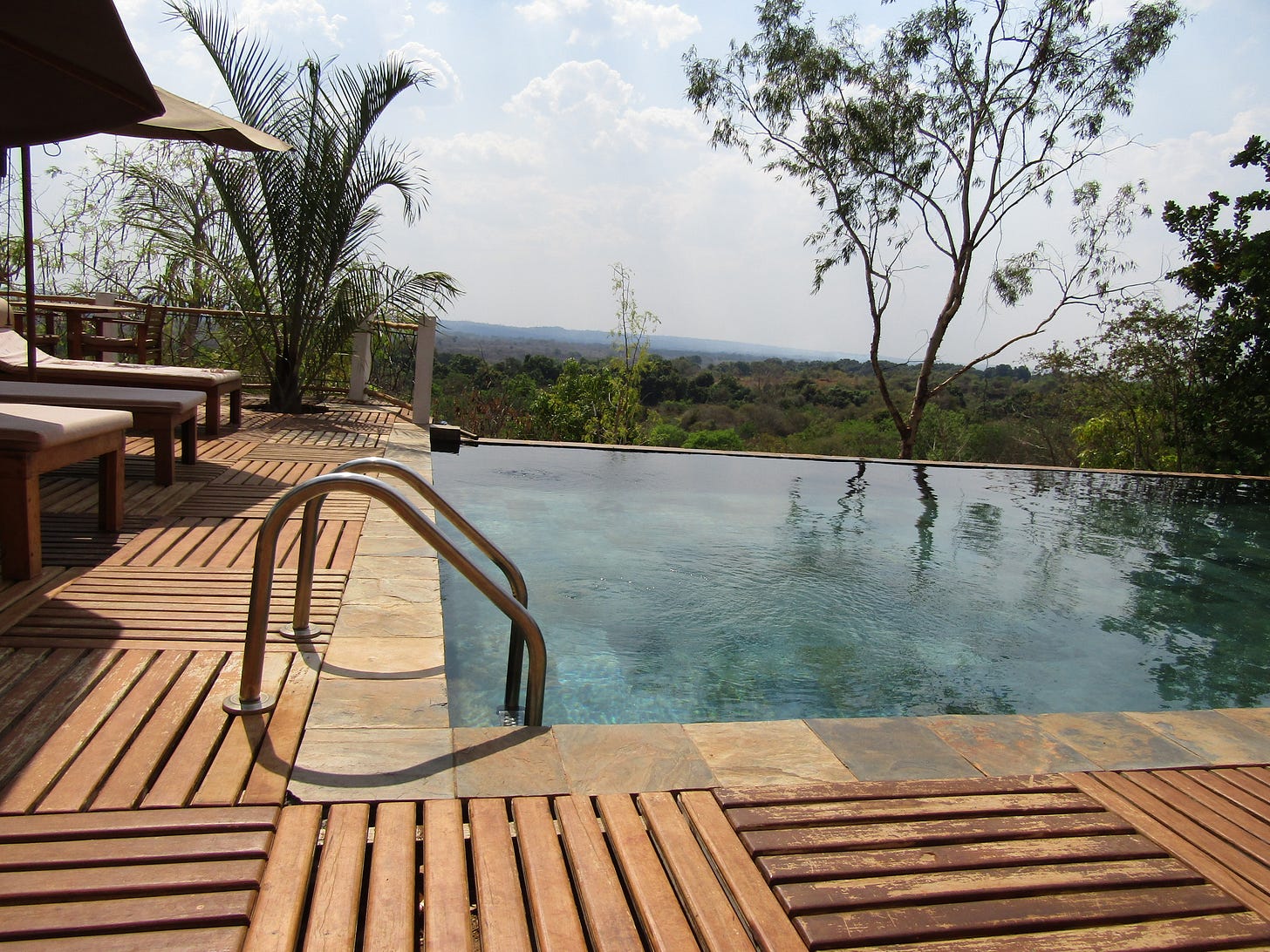
You two should sign up for Survivor!!
Love your adventure stories!